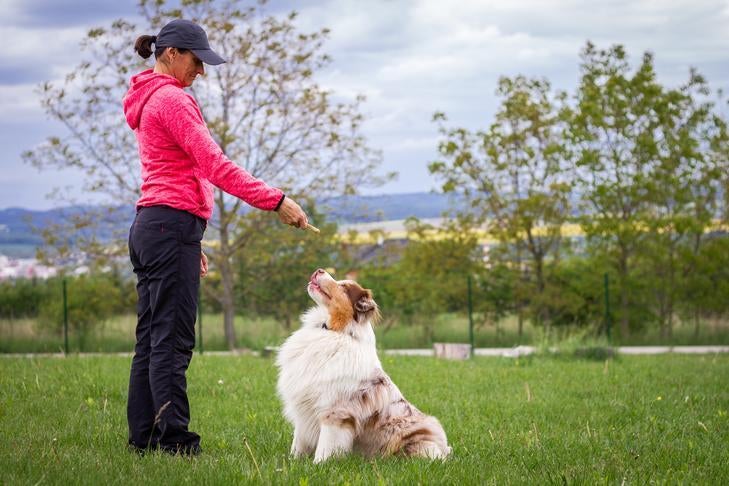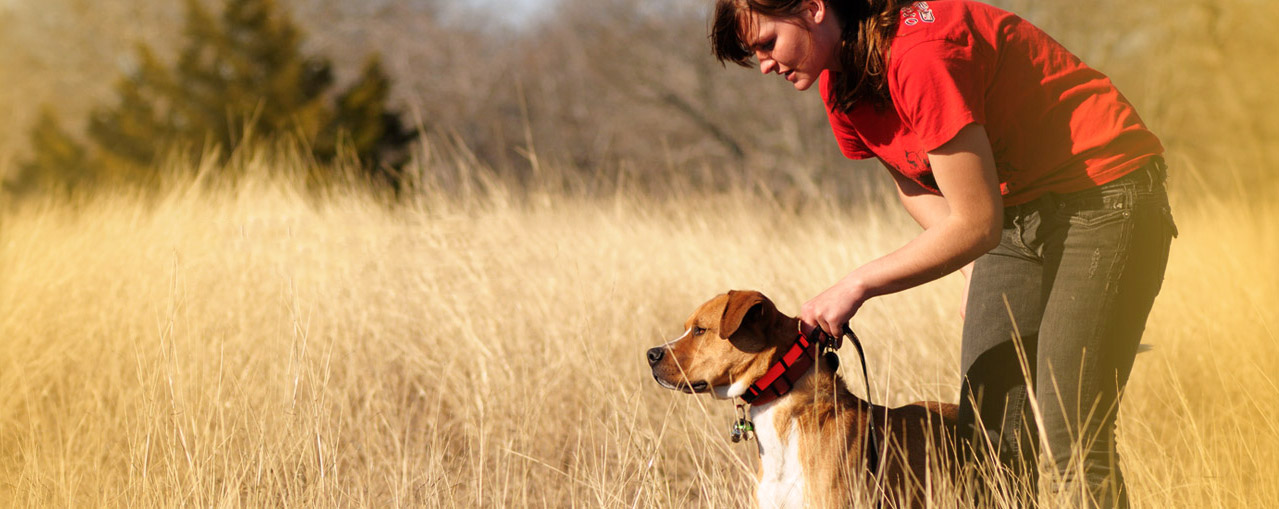Change Your Animal with These Professional Dog Training Tips
Change Your Animal with These Professional Dog Training Tips
Blog Article
Necessary Tips for Effective Dog Training: A Guide for Family Pet Owners
Reliable canine training is a diverse procedure that needs a critical approach customized to both the family pet's personality and the owner's purposes. Recognizing exactly how to navigate these barriers can considerably boost the training experience, inevitably changing the partnership between proprietor and pet dog.
Recognizing Canine Habits
Understanding pet actions is important for efficient training and promoting an unified partnership between canines and their proprietors. dog training. Canines communicate mainly via body language, vocalizations, and activities, making it essential for owners to translate these signals properly.

Socialization plays a considerable duty in pet actions; exposure to various atmospheres, individuals, and other pets can dramatically affect a pet dog's character. Aspects such as breed characteristics and private temperament must direct training methods, as some types might have specific behavior traits that necessitate customized methods. By understanding these aspects, owners can produce a supportive atmosphere that encourages favorable actions, causing effective training results and a much deeper bond with their pets.
Developing Constant Commands
Reliable communication with your dog starts with establishing regular commands. This foundational aspect of training is important for cultivating understanding between you and your family pet. Uniformity in the commands you make use of guarantees that your pet can dependably associate certain words or expressions with the desired habits.
When picking commands, choose clear, unique words that are easy to state and set apart from one an additional. Avoid using similar-sounding commands that might confuse your pet dog. Using "rest" and "remain" is appropriate, but "rest" and "hit" might lead to misconceptions.
Furthermore, maintain the same tone and quantity for every command. Canines are delicate to vocal signs, so differing your tone can develop complication.
It is similarly crucial to make sure that all family participants get on the exact same page relating to the commands utilized. A united front in command use will certainly avoid mixed signals and enhance the knowing procedure.
Positive Reinforcement Techniques
The power of favorable reinforcement in dog training depends on its capability to motivate wanted behaviors through rewards and appreciation. This strategy is grounded in the concept that behaviors complied with by desirable outcomes are most likely to be repeated. By including favorable reinforcement right into your training program, you can properly form your dog's behavior in a constructive way.
To implement positive support, it's vital to determine what motivates your pet dog, whether it be treats, toys, or spoken praise. When your dog performs a preferred action, such as sitting on command, right away reward them with a reward or love. This official site association between the command and the favorable outcome reinforces their understanding.
It's vital to timing the benefits appropriately; delivering the support within seconds of the preferred habits aids your pet dog make the connection (dog training). Additionally, consistency is essential-- ensure that all member of the family make use of the very same commands and incentive systems to prevent confusion

Gradually, you can decrease the frequency of deals with as your pet discovers the behavior, transitioning to applaud or periodic benefits. This method not just cultivates a strong bond in between you and your pet dog yet additionally promotes a favorable discovering setting, making training an enjoyable experience for both.
Socialization and Communication
Regularly revealing your dog to a range of environments, individuals, and various other animals is critical for their social development. Socializing ought to begin early, preferably throughout the vital home window of 3 to 14 weeks, when puppies are most responsive to new experiences. Older canines can likewise profit from continuous socialization initiatives.
Present your pet dog to different setups, such as parks, pet-friendly stores, and city areas. This direct exposure aids them adapt to different stimuli, reducing anxiety and worry reactions. Motivate favorable communications with other canines and individuals, making certain that these encounters are regulated and safe to promote confidence.
Make use of organized playdates with genteel canines, as this can enhance your pet's social skills and show them appropriate habits. Obedience courses and training sessions also provide exceptional opportunities for socializing, enabling your canine to engage with others in a supervised environment.
Display your dog's body movement throughout communications, as this will certainly help you determine their convenience level. Slowly increase exposure to even more difficult scenarios while ensuring that each experience declares. A well-socialized pet dog is most likely to exhibit well balanced behavior, making them a delight to have in any setup.
Addressing Common Training Difficulties
Every pet dog proprietor will certainly run into training challenges eventually, despite their pet dog's age or socializing level. Recognizing typical issues such as stubbornness, disturbances, and terror can assist in developing reliable approaches for renovation.

Diversions during training sessions can derail focus. To battle this, begin training in a silent environment with very little stimuli. Progressively present distractions as the pet dog ends up being extra competent in commands. Short, regular training sessions are likewise effective in keeping interest.
Fearfulness can hinder a dog's discovering procedure. Progressive desensitization to the source of anxiety, paired with favorable support, can aid ease stress and anxiety. Persistence is critical; never require a pet dog right into a scenario that creates distress, as this might intensify the concern.
Ultimately, understanding and attending to these typical difficulties with an organized technique will promote a much more productive training experience, strengthening this contact form the bond between dog and owner while advertising efficient learning.
Verdict
In summary, effective pet dog training depends on a comprehensive understanding of canine actions, the establishment of constant commands, and the application of favorable support methods. Socializing plays an essential function in creating well-adjusted pets, while addressing common training challenges requires patience and flexibility. By applying these essential methods, family pet owners can promote a strong bond with their pets and promote preferable actions, eventually causing a harmonious connection between human beings and their canine companions.
Understanding dog behavior is vital for efficient training and fostering an unified relationship between canines and their proprietors.Socialization plays a significant function in dog habits; exposure to various settings, people, and various other animals can dramatically influence a canine's temperament.The power of favorable support in pet dog training lies in its capability to encourage wanted behaviors with incentives and appreciation. By including favorable reinforcement into your training routine, you can properly form your pet dog's habits in a constructive manner.
In summary, effective pet training counts on an extensive understanding of canine behavior, the establishment of consistent commands, and the application of positive reinforcement techniques.
Report this page